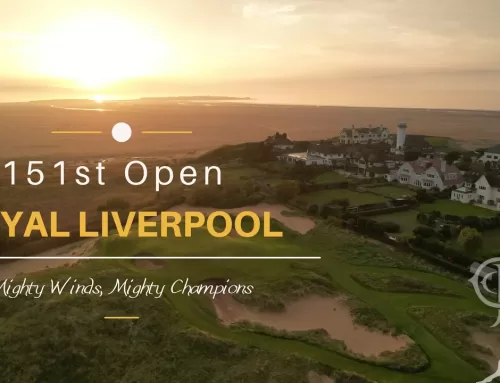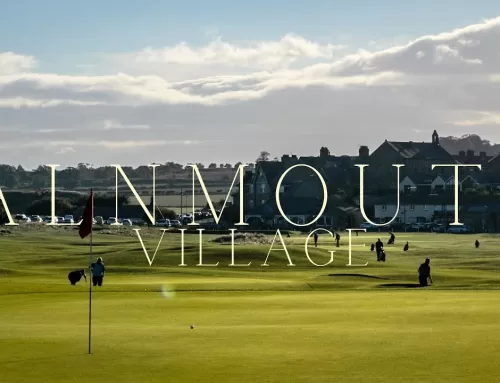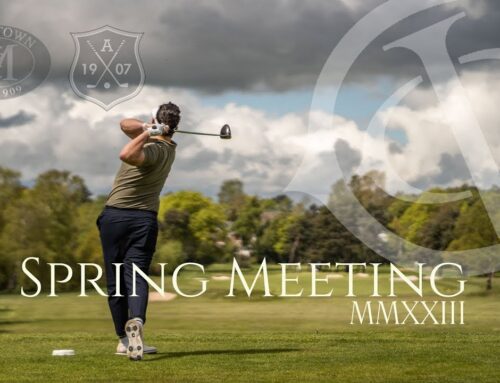Our third instalment from our Netherlands Tour in partnership with FootJoy at the end of 2022 takes us to Kennemer Golf & Country Club a stones throw inland from the beaches of Zandvoort. Home to 27 holes, each named after prominent figures in the clubs history – Van Hengel, Pennink & Colt – this is one of the most traditional and well regarded clubs in The Netherlands.
Kennemer Narration.
The coastal town of Zandvoort in North Holland is known for two things: beaches and Formula 1 racing.
And just a stones throw from the famous beaches you will find the Kennemer Golf Club, one of the oldest and most traditional clubs in the Netherlands.
It’s apparent from the moment you set foot inside the clubhouse at Kennemer that this is a club which is proud of its history. An aura much like many of the quintessential British Golf Clubs – dark wood paneling, crackling fireplaces with paintings hung above, and deep leather armchairs give the clubhouse an intimate feel. There’s even a snooker room with cues propped up against the doorway, and often a pair inside settling a match that was halved out on the links.
Founded in December 1910, in the early days the club played over a rudimentary 9 hole layout, moving to its present site in 1928 and enlisting the services of a certain Harry Colt for his first ever project in the Netherlands.
10:24 Ernst pod – Colt walked through Kennemer with 180 sticks of 3 feet in length each and staked the course. Much like Swinley Forest…
The links at Kenner are somewhat unique, insomuch as it is home to 3 loops of 9, – A, B & C – each named after important figures in the history and evolution of the course (not sure if we can do something clever here with how we bring this to life? Link to the land map of the 9’s is found here)
A – the ‘Van Hengel’ is named after the instrumental member and eminent figure in Dutch Golf and runs along the Eastern border of the property and is the most recent 9, opened for play in 1985
B – ‘Pennink’, the famous anglo/dutch architect who help construct the additional holes on A based upon original sketches left behind from Colt’s visits over 50 years earlier,
& the C 9 of course denotes ‘Colt’ who laid out the first initial 18… in fact 20 holes.
‘B&C’ is the original 18 and the product of Colt and his associate John Morrison, however there were always plans for a third 9 at Kennemer. In the 30’s Colt’s health was deteriorating and assisted by Morrison to continue the project, only the 1st and 9th holes on ‘A’ were completed before the the war meaning further construction was halted. Those 20 holes remained for over 40 years, until Frank Pennink came in to finish the work Colt had started decades before, working with the original sketches and adding his own unique touch. Pennink also suffered from ill health, dying of cancer in 1983, until member and prominent figure in Dutch golf – Steven van Hengel – was the man who saw that project to its conclusion in 1985.
Today – as a regular host to the Dutch Open – the club uses holes from each loop in its routing, consisting of all of A on the front 9, with several holes from B&C to create a composite back 9. Testament, not only to the quality of holes left by the trifecta of architects whose work spanned several generations, but also proof that golden age design is still able to test the elite player.
The original B&C course is magnificent. Re-employing a concept Colt was famous for introducing at a certain Scottish links several years before, at Muirfield. The course was routed in two concentric circles.
This concept is still regarded today as a watershed moment in the evolution of golf course design, the wind direction never once allowing you to settle into a certain shot shape, emphasising the importance of dealing the elements if you wish to score well and bringing you back to the house after 9. The course works its way around the front 9 in an anti-clockwise direction before playing back into the house, where you head back out playing the back 9 in a clockwise direction. A far cry from the traditional out and back links of the ancient Scottish links courses, a product of Colt’s golden age flair. This seismic change in the way courses were designed also enabled a two tee start, enabling courses to accommodate the rapid growth in popularity of the sport.
The opening hole on the B & C sets the tone for what’s in store: an elevated tee shot played to a heavily rumpled fairway below, with crashing dunes dominating the landscape for as far as the eye can see. What appears to be a rumpled rolling expanse of linksland soon unfolds as the dunes swallow you up on the fairway, with your second shot often played blind to a green banked by a series of leviathan dunes.
The second continues the drama: the steep climb up the slope to the tee reveals a short par 3 to a tabletop green. Despite its relatively modest yardage, the perils of missing short or left are plain for you to see.
The course continues in much the same vein with bold land features creating intrigue, forcing you to think about where to leave yourself, and quick to expose any poorly struck shot. Greens are protected by run-offs and natural bunkering, and the undulations within the greens make seeking out the right angle and shot to play for your approach essential if you want to make a regulation par.
The scenery and vistas draw you in, before you must gather yourself and assess your options for the shot at hand, much like some of the Open Championship courses in Britain.
The 7th hole is a standout – the unnerving blind tee shot played over the dunes requires a committed strike, but you soon realise that the fairway below is quite generous. The gentle camber in the land means that significant yardage can be gained if you choose the faster route down the left, with the second shot played over a cavernous trench bunker to a wide green.
It’s rare to find a long, uphill par 4 which sticks in the memory, but the 9th at Kennemer is an exception. Ascending to another fantastic elevated teebox, you’re greeted with a mesmerising view back up to the green, framed by an amphitheatre of dunes with the stunning clubhouse beyond – it is without question one of the great views in Dutch golf. Two well-struck blows are required to reach in two.
But… the 15th at Kennemer, might just be the most memorable of them all. A dramatic par three, played uphill and across a huge ravine with bunkers well short creating a sense of visual deception. A hazard that you must avoid at every cost. An iconic shot with the clubhouse in the distance, you briefly work your way back out before holing out under the gaze of the terrace.
It’s apparent how proud the club are of its history. As a result of the German occupation of the Netherlands during the Second World War, the course at one time housed 122 German bunkers along with multiple anti-tank walls. These reminders of wartime events are clearly visible today, and aspects are still used today, even the greenkeeper sheds. Since the 1950s, the club has been meticulous in their commitment to preserving the character of Colt’s work, relying on the detailed archival records of his visits and correspondence with members, in much the same way the links were built over those many decades.
To this day, the club shrewdly uses its archives to inform any future changes and whilst Colt, Pennink and van Hengel may well be the names you see attached to the scorecard when you visit, Kennemer’s success is undoubtedly down to the passion and hard work of its members today, who work tirelessly to continually refine and improve on what they have inherited, and that looks set to stay for future generations.






